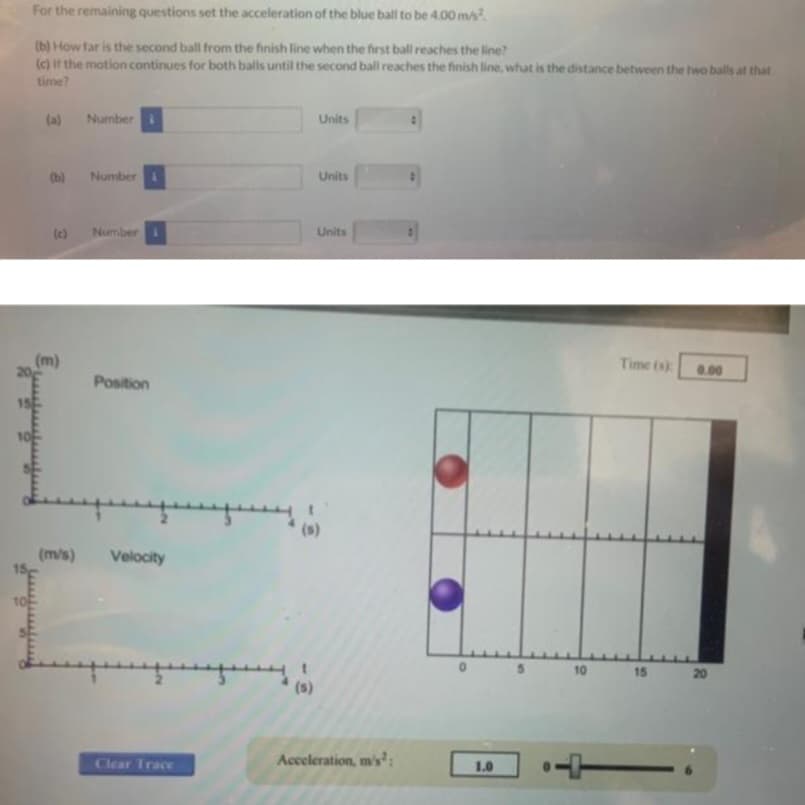In the simulation above the red ball's motion is always the same, while the blue ball's motion can be modified by changing the value of its acceleration (that is set by the slider). Note that for each part of this question you can use the simulation to help guide you, and in some cases to check your answer, but you should calculate numerical answers based on principles of physics rather than taking numbers directly from the simulation. (a) What would the blue ball's acceleration have to be for the blue ball to win the race by a distance of 15.0 meters? This may not be possible to achieve, given the upper limit of the slider in the simulation, but you can still work out the answer.
In the simulation above the red ball's motion is always the same, while the blue ball's motion can be modified by changing the value of its acceleration (that is set by the slider). Note that for each part of this question you can use the simulation to help guide you, and in some cases to check your answer, but you should calculate numerical answers based on principles of physics rather than taking numbers directly from the simulation. (a) What would the blue ball's acceleration have to be for the blue ball to win the race by a distance of 15.0 meters? This may not be possible to achieve, given the upper limit of the slider in the simulation, but you can still work out the answer.
Related questions
Question

Transcribed Image Text:In the simulation above the red ball's motion is always the same, while the blue ball's motion can
be modified by changing the value of its acceleration (that is set by the slider). Note that for each
part of this question you can use the simulation to help guide you, and in some cases to check your
answer, but you should calculate numerical answers based on principles of physics rather than
taking numbers directly from the simulation.
(a) What would the blue ball's acceleration have to be for the blue ball to win the race by a
distance of 15.0 meters? This may not be possible to achieve, given the upper limit of the slider in
the simulation, but you can still work out the answer.

Transcribed Image Text:15
10
For the remaining questions set the acceleration of the blue ball to be 4.00 m/s².
(b) How far is the second ball from the finish line when the first ball reaches the line?
(c) if the motion continues for both balls until the second ball reaches the finish line, what is the distance between the two balls at that
time?
10
(a)
(b)
(m)
Number
Number
Number
Position
(m/s) Velocity
Clear Trace
Units
(s)
Units
Units
(s)
Acceleration, m's¹:
1.0
10
Time (s)
15
0.00
20
Expert Solution
This question has been solved!
Explore an expertly crafted, step-by-step solution for a thorough understanding of key concepts.
Step by step
Solved in 6 steps
